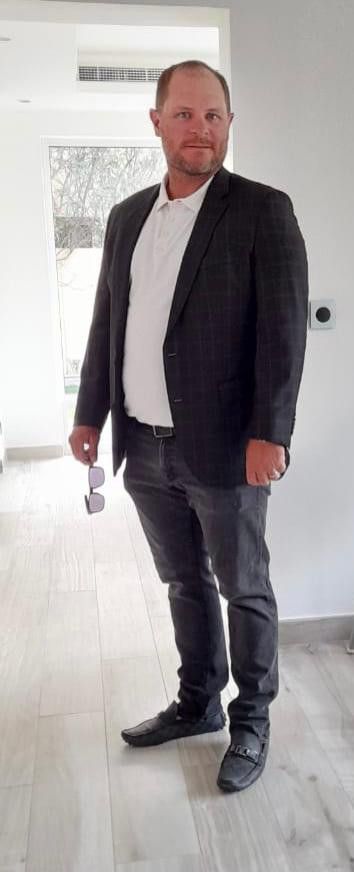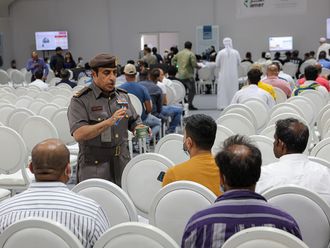
Dubai: A year after the COVID-19 pandemic had first forced offices to close in the UAE, Work From Home (WFH) is taking a toll on professional and personal lives, blurring the boundaries between the two, and throwing work-life off balance, said employees and employers who still WFH to varying degrees.
Once little-known in the pre-pandemic world, fringe trends such as WFH and ‘Zoom’ meetings were thrust into virtually everyone’s lives last March, turning bedrooms into offices and dinner tables into workstations. Family members jostled to find their own space and electronic devices to work or study, as many also grappled to learn how to use the ‘new’ remote work platforms.
In this special report, Gulf News reveals the struggles faced by professionals, managers and business persons in trying to keep their jobs and companies running in an environment that was meant to be a personal sanctuary — their home.
‘Phone in one hand, spoon in another’
Deepika Vaidehi, founder of D’Feminine Collections, an online platform for fashionwear sales, said WFH has meant juggling work and family at the same time. “I have a phone in one hand, a spoon in other. I’m also doing my business work at the same time. Times have changed. We have to accept the new reality. It requires a lot of self-discipline. It becomes stressful if you don’t manage your time properly,” she said

She added that the situation requires a lot of discipline and planning. “I have a daily planner set in my head and I don’t deviate from my plans.”
Her family wakes up at 5am. “Every day my schedule involves my work, my fitness routine. I also cook for my family take care of children’s online schooling and their exams — all at the same time. It is hard but it is better to be safe than sorry,” she said.
Longer hours
Professionals, such as Richard Everest, who is head of commercial and legal for a private multinational firm in Dubai, have not only found themselves working differently, but also longer. “Working from home is a different kind of stress that anyone has experienced so far. The biggest one being that the boundaries between work and home have largely disappeared. The physical split is not there anymore and as a result, people are working longer hours than usual. Often we are working longer and this infringes into one’s personal life,” Everest said.
Losing touch
“We are also missing on the interactions with colleagues, having a banter and maintaining, establishing those relationships, besides keeping our morale and focus going. Stress has increased in that sense with not being able to communicate with your colleagues,” Everest added.

Everest said to counter this feeling, he meets his colleagues for a coffee outside just so they can meet up. “Another thing on Zoom calls, we always keep our videos on so it gives it a more personal connection.”
‘Unexpected noises and expenses’
An Indian expat who works for a bank in Dubai said one spillover of the stay-at-home orders last year was that he had to buy extra electronic devices for his children who are distance learning. The executive, in his 40s, said he sometimes has to share his office laptop with his children if there is an issue with their device or the internet.
WFH and distance learners also means he has to find a quiet time for online meetings, which is not always possible. “I think we’re coming to a kind of understanding that there will be some background noises, some unexpected noises during the meetings. But that still affects my concentration. I try to camp out in my room but I sometimes have to leave, like when the maid comes in to clean or when the family needs me for something,” he said.
The expat, who did not wish to be named, added he prefers to work from his office as “I need to get work done without any disturbances and quickly, in a continuous flow”.
Coping better
For Leanne Sherlock, Safe Space cofounder, WFH is not that stressful. “Working in the creative industry, I’ve always been fortunate enough to work quite flexibly. I enjoy the variety my career offers, whether that’s taking my client meetings or attending group brainstorming sessions,” the 35-year-old said.
However, initially she had “struggled” with the lack of human interaction and “Zoom fatigue”. To cope, she took “small conscious steps to ensure stress did not engulf me. I find that movement is an excellent antidote to stress, so I take regular short breaks to do the dishes or fold laundry — anything that allows my brain to be still for a while and disengage from my screen”.
Sherlock said she has increased her fitness and after WFH takes regular walks around the marina “to allow my body to move and often meditate in the evenings to ensure I remain connected. I’ve also upped the number of fitness classes I attend each week as I think exercise plays a massive part in our mental resilience”.
Investing in tech

Murad Ali, 42, Regional Sales Manager (Poly), said: “Working remotely efficiently took time to catch on as keeping the right balance between work and home was not easy. As the family understood the requirement of WFH, I combined with technology, especially a professional headset from blocking all external noise, and with a high quality 4K camera brought a total different experience for productivity working remotely.”
How are companies surviving WFH?
Hiring new staff and training them has been the “biggest problem” under WFH, said Byron Kraemer, managing partner of Landhouse Properties. New joiners too have suffered from the lack of direct mentorship, he added. “In a sales business WFH isn’t a problem initially for employees who are experienced and don’t need much management. Obviously face to face meetings with customers helps massively but it’s something which we can get over. I think the biggest problem with working from home is trying to hire and mentor new joiners. How in any industry can someone in a new role learn anything while WFH?” he added.

Office better for the bottom line?
“Employees need to be around leaders and successful people in their industry to learn. We have always heard people say they learnt from the best, however while WFH you cannot do that. As soon as we were allowed back in the office I asked everyone who was happy to go to the office to work from the office. Instantly we saw a vast improvement in numbers for the company and importantly the new joiners,” said Kraemer.
“I am not sure how anyone straight out of university is able to learn a trade by WFH and I think if we continue this the younger generation will suffer immensely from not having the necessary hands on experience to excel.”
Trying to maintain corporate culture
Vinayak Mahtani, CEO of bnbme, a holiday home management company with operations in Dubai and India, also said the most difficult aspect of WFH has been to “keep the company culture among new employees”, especially across different cities.

He added: “What we decided to do was have a daily huddle every morning for 15 minutes on Zoom for those not in the office. It’s worked well to touch base and also crack some jokes. We are starting to see more and more employees coming back to work [in the office]. I think they are now missing the office experience and need to get away from the home to a professional work environment.”
Legal fallout of WFH — pay and performance
In some cases, WFH has been abused by employees, leading to terminations, said Devanand Mahadeva, director of Goodwins law firm. “We see increasing issues of performance related to termination of labour contracts as organisations are not able to monitor the dedication and performance while staff are WFH, unless they have the use of efficient technology, which may not be in the easy reach of smaller organisations. The serious issues in these also lead to Article 120 (UAE Labour Law) Terminations of Staff,” he added.
Taking advantage?
“On the other hand, the hard working staff feel they are not properly recognised nor appreciated as the employers do not physically see them working while WFH. There are redundancies related to WFH as the support staff at the office spaces are not required anymore. The organisations may not follow due process and in these redundancy terminations and thus face cases of arbitrary termination against them.”
Overworked, underpaid
Mahadeva added that WFH has “disturbed” the work-life balance of employees due to employers not differentiating between working hours and off-work hours. “The staff are being disillusioned and not being honoured with agreed remunerations, which are leading to Article 121 (UAE Labour Law) Termination of Employment Contracts by the Employee,” he said.
Mental health impact — isolation and burnout
The two “biggest concerns” around WFH at the outset were isolation and burnout, said Devika Singh-Mankani, Psychologist, The Hundred Wellness Centre & Fortes Education Schools. Burnout can manifest in many ways, and not always immediately, she said. While anxiety and changes in mood are the most common signs, irritability and withdrawal can take over as well. It’s not uncommon to experience changes in sleep patterns, either too much or too little. While many theories abound about what causes burnout, the common factors seem to be the inability to disconnect and the lack of human connection and support, she said. “Burnout affects the anatomy and functioning of the brain. It is a real condition that requires serious attention,” Singh-Mankani added.
Conflicting emotions
Some of the toughest mental and emotional struggles come from the contradiction that many people feel about WFH, she said. “In the beginning it was great — no commute; and you technically only had to dress your upper body and you could have side conversations on zoom with colleagues in the privacy of the digital conference room without having to deal with other people.”

Then, for many reasons, she added, the same routine started to become tedious and monotonous, and “we started to miss the live human connection. The same privacy that was cherished became loneliness”.
Losing boundaries
This contradiction can be confusing for many who are still WFH, Singh-Mankani said. “How come I loved it in the beginning but now it’s depressing — is what I hear some of my clients say. Others will say, the family time together was fabulous — until it became enmeshed and we lost personal boundaries because home and work became one.”
What is the way out?
Singh-Mankani said the way to work through this “dilemma, this externally-driven circumstance that can be wonderful and taxing at the same time, is to know what I call your IZ, or Inner Zone”.

She has been working with clients to progress towards finding their balance — and it’s “not what your neighbour does or what you thought you would need last year” when we all switched to WFH overnight. “It’s what you need now after going through the journey of establishing a routine and then, having the luxury of hindsight thinking through the time that has elapsed, to redefine what works for you and your organisation. What inspires you, what motivates you,” she said.
Striking a middle ground
Some statistics have found that being physically present can contribute to work engagement, but this may not always be 100 per cent possible, she added. It might be worth discussing a schedule of WFH and physically coming to work that combines the two, Singh-Mankani added.








